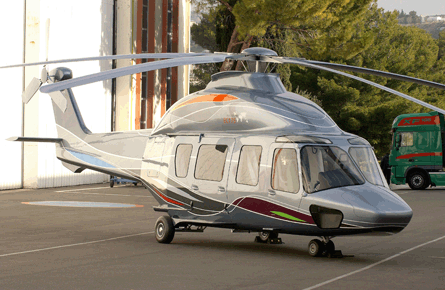Amid an uncertain business environment in 2009, the Asia-Pacific region is one silver lining for Eurocopter despite the dark clouds that are gathering around the global helicopter market.
"It helps that we have a large backlog and a diverse range of customers. We had only 30 cancellations out of 1,550 bookings globally in 2008. This is not very much, not dramatic, but it is a trend," says Philippe Harache, Eurocopter senior executive vice-president. "The advanced sensor is the secondhand market, which is seeing an increasing number of aircraft being available. That is an indicator of a crisis to come."
This crisis, he points out, will hit every sector of the helicopter market, but especially the commercial sector. In mature markets like the USA and Europe, for example, falling tourism dollars have depressed the commercial helicopter market. Tight credit is also discouraging prospective customers.
Amid this gloom, in which Eurocopter is projecting a 30% drop in global sales in 2009, Asia-Pacific could buck the trend by posting a growth of 15-20%, although this comes off a low base. Eurocopter sold 100 helicopters worth €389 million ($491 million) to the region last year, accounting for only 15% of its total bookings in 2008. This, however, has increased by five times over five years.
 |
|---|
© Eurocopter |
"Despite the ongoing economic crisis, we expect growth to continue in Asia-Pacific. These countries require a lot of equipment and platforms for operations such as emergency medical services, offshore, and search and rescue. The modernisation of military fleets will also continue for a few years," says Harache.
Eurocopter, which tripled its Asian workforce over five years to 1,690 in 2008, will invest in the region by opening more subsidiaries to get close to customers. New maintenance, repair and overhaul centres in China, India and South-East Asia will supplement the 10 it has in the region. Pilot training centres in China and India are in the pipeline, adding to one in Singapore and a forthcoming simulator in Malaysia.
This is partly linked to the military business. In South Korea, for example, Eurocopter is working with Korea Aerospace Industries to develop a utility helicopter for South Korea's army. This project will bear fruit in the coming months and is a model for future joint-military programmes. It is also running well in tenders in India, Indonesia, Japan and Malaysia, and some will be awarded this year.
The government and para-public markets, however, are even bigger. Eurocopter has a big presence in China, where its rotorcraft account for about half of the 120 that are in service. It also hopes to supply heavylift and search and rescue helicopters, which are in demand after last year's devastating earthquake in Sichuan province showed their usefulness. It is also developing the EC175/Z15 utility helicopter with China's Harbin Aircraft, a venture that it says will be a model for future civil partnerships.
India and Indonesia are two other markets with a lot of potential. Both are sprawling countries with growing demand in the mining and offshore oil-drilling businesses. Both also have a growing business class that realises helicopters are a good alternative to corporate jets, especially when there is a shortage of landing strips in many parts of the country.
Eurocopter also faces teething problems in these growing markets. In China, for example, the military regulates airspace and imposes strict restrictions on the use of low-altitude airspace. Infrastructure remains a problem in India, where the first heliport is expected to be online only this year.
There also remains a perception that the company, while increasing its market share, has not paid as much attention to after-sales support. It is attempting to rectify this by opening a customer service centre in Hong Kong, the first outside France, next February to handle all queries from Asia-Pacific. This will allow it to provide 24/7 support to customers and fulfil its aim to put aircraft back to flight within 48h worldwide.
The centre will deal with requests for urgent parts for aircraft on ground situations, the management of parts by hour contracts and warranty claims. Engineers can also be despatched at short notice if needed. A logistics warehouse in the city will handle 70% of the routine spares and AOG requests, and 80-90% of parts by hour requests by mid-2009. If a customer requires spares and it is not immediately available, the company can cannibalise spares from assembly and production lines to meet demand.
"Customers require faster and better level of service and this brings logistics, MRO, training and services close to them," says Derek Sharples, vice-president customer support. "This is the time, more than ever, to support customers, to be near them, and develop new services."
Source: Flight International













